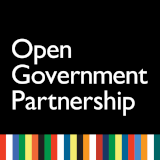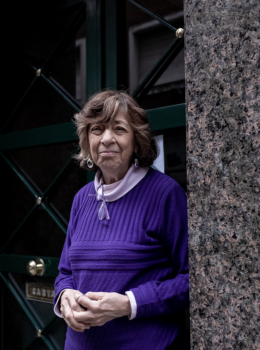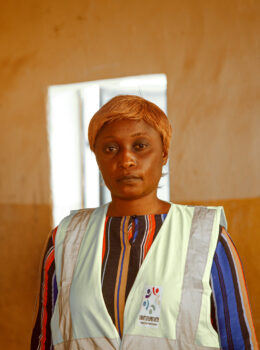Not One Woman Less; Regional Demands for an end to Violence Against Women
In Argentina, a woman is killed every 34 hours from gender-based violence crimes.
This is one of the biggest and most frequent human rights violations in the country and is a significant issue in public health and safety. This is the case across much of the region, and in response, the feminist grassroot movement Ni Una Menos (Not One Woman Less) was born. In 2015, almost 300,000 citizens joined the movement and participated in massive protests across Argentina. They demanded concrete action to end gender-based violence, protect reproductive rights, promote gender equality, and called for putting gender-based violence on the public agenda.
One really important issue that comes with the demand for change is to be able to check whether stated efforts to tackle gender-based violence are being honored. If you cannot see specifically how well reforms and initiatives targeting gender-based violence are being funded, there’s just no way of knowing if enough is being done. The ability to hold your government accountable and the resources to base your demands on actual numbers are both very important in following up with the call to action. So how can you be certain that the efforts to tackle violence against women are getting the governmental support they need?
Is the Government Putting its Money Where its Mouth is?
During the development of Argentina’s third OGP action plan, 2017-2019, government officials, civil society organizations, and citizens – particularly women’s groups – brought gender-specific demands to the National Women’s Institute that led to the participatory drafting of the Plan for Equal Opportunity and Rights. The Plan contains more than 350 actions aimed at preventing, monitoring, and evaluating violence against women and strengthening institutions to ensure women’s rights and safety, as well as ensuring financial autonomy and economic empowerment. This covers the areas of prevention, comprehensive care, institutional strengthening, monitoring and evaluation, and training.
With these areas or types of intervention that can be addressed, there should also be budgetary breakdown of each area’s allocated resources. As part of the action plan, the National Women’s Institute started a budgeting initiative that allows citizens to know how much is being spent where.
Actions Against Gender-Based Violence Get the Support of the People
Two policies included in the plan were passed by the government – one ensuring gender parity in the Argentinean congress and the other on instituting mandatory gender training for government employees. As part of their next action plan, Argentina is committing to following the implementation of these two laws and providing public information about gender equality challenges and policies to address them.
In 2020, Argentina’s Ministry of Women, Gender and Diversity launched its Action Plan Against Gender-Based Violence and hosted nine federal participatory forums across Argentina to foster exchanges and pool the various approaches to prevention, integrated attention, as well as to tackle the barriers that prevent efficient interventions. Overall, 3,400 people from various social, academic, political, union and other organizations participated. In this regard some advances are being made in bringing gender issues to the foreground, as well as making opportunities for people to participate in the early stages of policy development.
However, when it comes to monitoring resource allocation, many government agencies did not provide information in a standardized way, in part because they found it difficult to specifically identify gender policy budget items. As a result, the platform opened for monitoring purposes has data but not collated in a way that it is broadly possible to make comparisons across policies, or ministerial departments. Without the possibility of using what data has been provided to draw conclusions about the funding of these policies, the platform isn’t yet living up to its potential.
Getting the data Organized to Carry On the Fight
The inclusion of measures related to this area in 2020 reforms shows that the policy proposals are being listened to and important steps in the fight against gender-based violence have been taken. Looking ahead, it is crucial that the interministerial process of sharing budgeting in this area is standardized and made more usable. Once this is done, it should make it possible to draw broader conclusions about budgeting for specific policy areas. This would mean that the public can get a sense of whether they believe that enough is being done to advance gender equality.
PHOTO: Open government champions in Argentina meet to monitor and provide accountability for the National Action Plan for the Prevention, Assistance and Eradication of Violence Against Women.
Credit: Instituto Nacional de Las Mujeres, Argentina







